Getting started with encrypted e-mail using Thunderbird and Enigmail
E-mail encryption is getting more and more important as more information is accessible to your ISP, e-mail provider or even your government. In this tutorial I won’t be going into any of the principles for why you should encrypt your e-mail or how it works - I rather assume that you have already realized the dangers of letting your personal e-mails swarm around on mail servers open for everyone to read.
Preliminaries
In this tutorial I’m going to use Thunderbird on Ubuntu. If you are running Windows or another Linux distro, you might need to do some extra modifications. I’ll see if I might implement those at a later point in time, but for the moment being you are on your own.
Installing Thunderbird
First of all, you should have Thunderbird installed. This is done through the Ubuntu Software Center, which you find by clicking Applications > Ubuntu Software Center.
Search for Thunderbird and install it by clicking the yellow arrow.
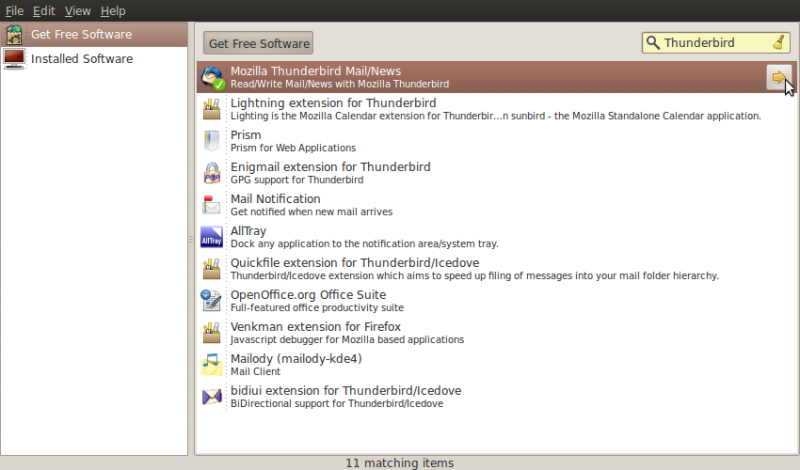
Then click “Install”.
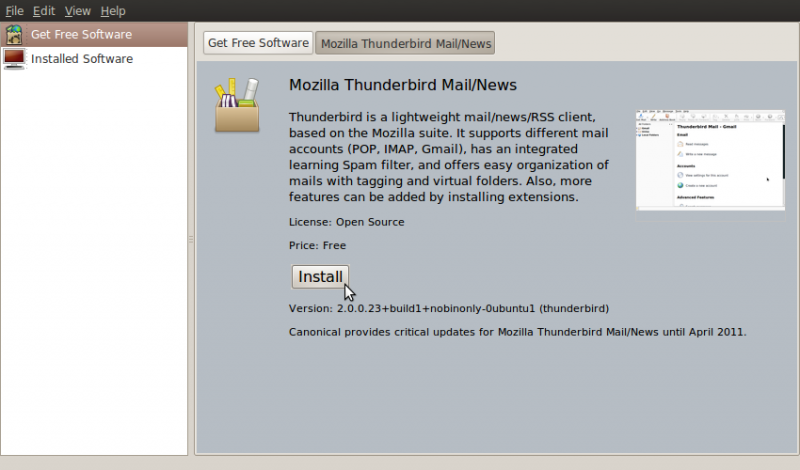
When Thunderbird is installed, start it up by clicking
Applications > Internet > Thunderbird
When you start Thunderbird for the first time you’ll be asked to set up your account. The wizard which is used in Thunderbird is quite intuitive, so I won’t give you a explanation of it in this tutorial.
Installing the Enigmail extension
Now, we are going to install the Enigmail extension. This may be done through the Ubuntu Software Center as well, but since you might be running Windows or Thunderbird 3.0 (as I am), I’ll show you how you may do this through the interface in Thunderbird.
In Thunderbird, click
Tools > Add-ons
Search for Enigmail, and click “Add to Thunderbird…”
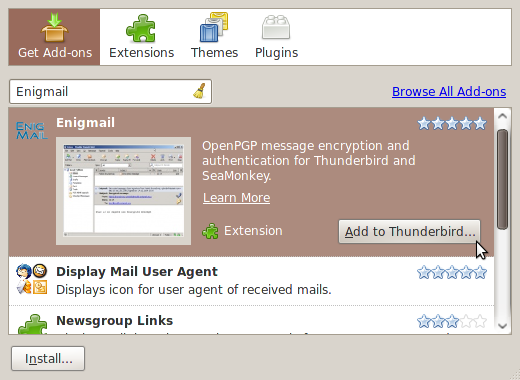
When prompted, restart Thunderbird.
Setting up Enigmail
There will be a new button next to “Tools” which reads “OpenPGP”. Click on
OpenPGP > Setup Wizard
Then click Next
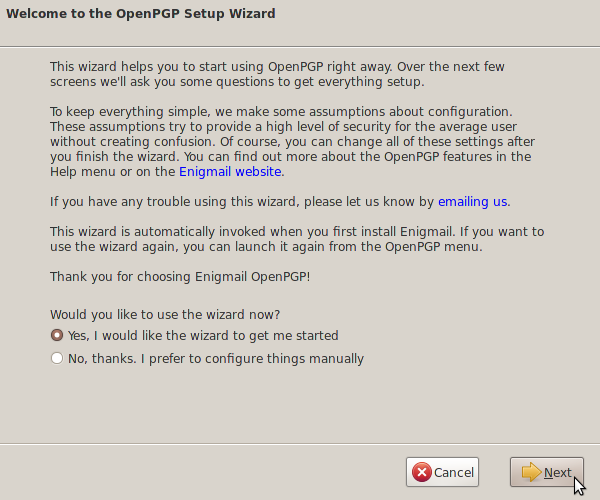
Then Next again
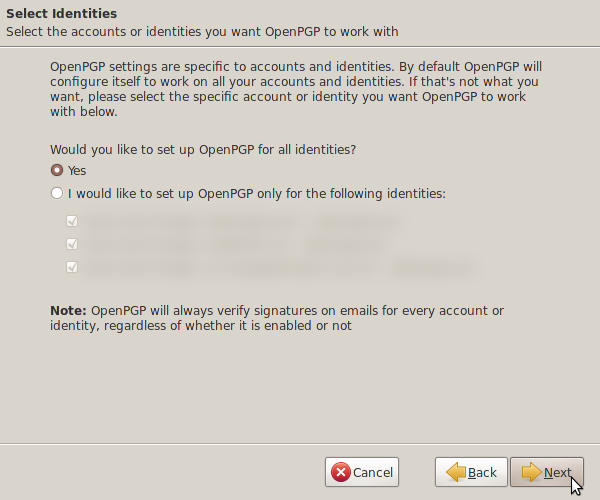
Now, you should decide whether to sign and encrypt all your mail by default - that’s up to you, but I of course chose both.
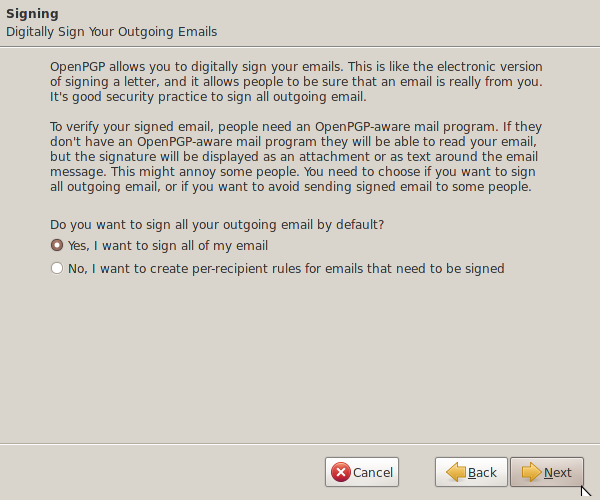
This is for decryption (which only will be enabled for people you have a public key for).
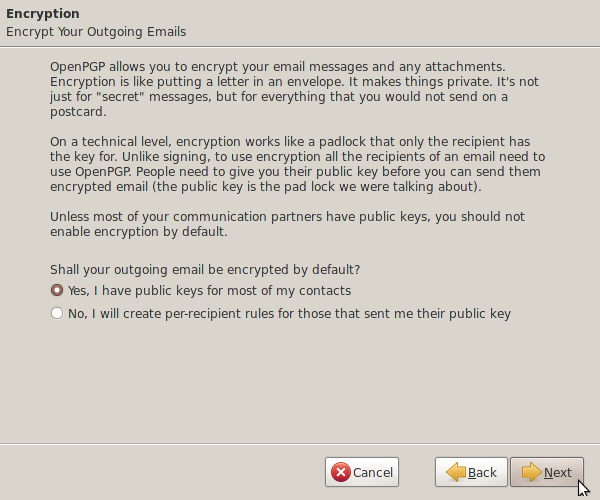
Next, you may select whether you want Enigmail to disable/enable some things for you, to make sure it runs flawlessly. For instance, it disables HTML in outgoing messages, which some of you might not want. In that case, click Details… and change the values to whatever you want. Nothing will crash if you deselect these boxes, but some messages might not get decrypted as they are supposed to. If you don’t need fancy formatting in your messages, I suggest you leave everything checked.
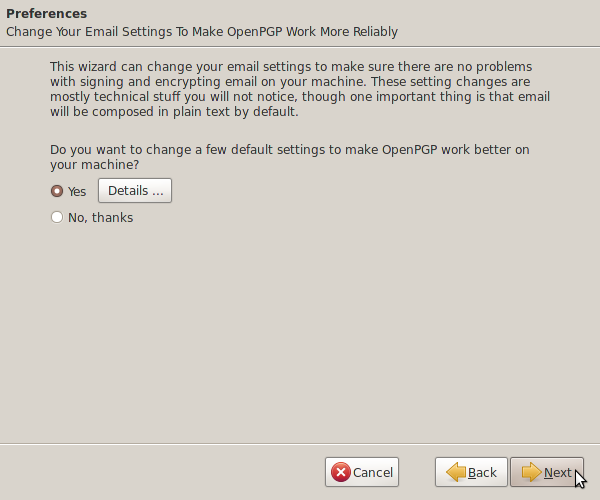
The next part is to create a new public and private key:
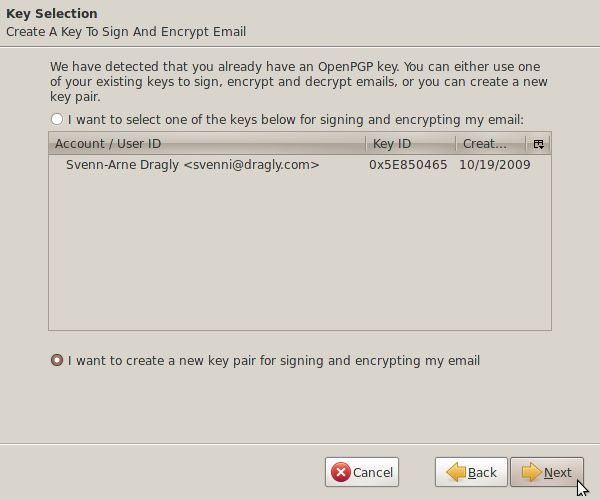
Select an account and type in a passphrase:
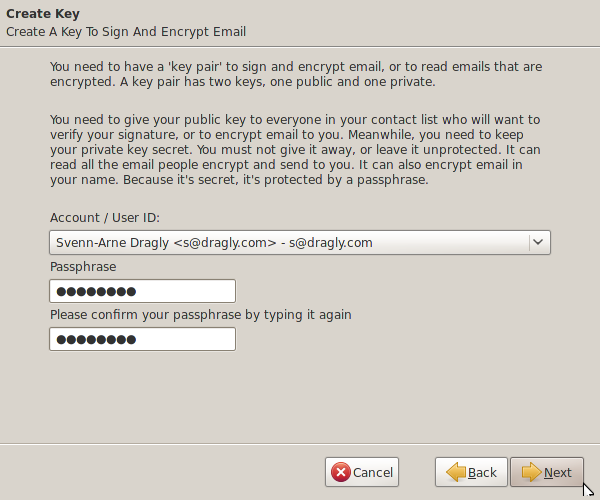
And we are as good as done!
Click next, and Enigmail will do the rest for you.
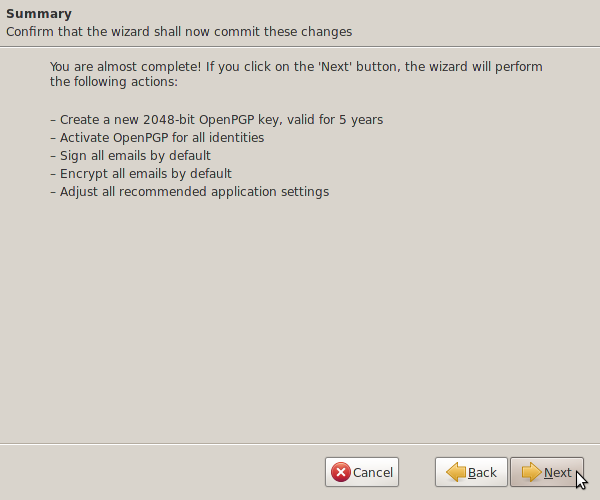
Now, sit back and relax. Enigmail is creating your superduper encryption key while you are encouraged to surf the web.
When prompted, say yes to create a revocation sertificate (if you want to). Enigmail pretty much explains this itself.

And some more info…

That’s it for now. You should now be able to send and recieve encrypted messages using your key-pair!
More info will come about how to use your new safe e-mail!